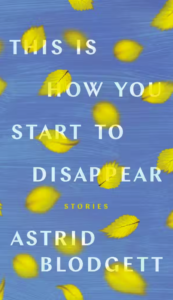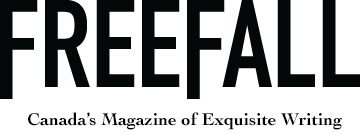By Kendall Bistretzan
This is How You Start to Disappear
by Astrid Blodgett
University of Alberta Press (2023)
Short story writer Astrid Blodgett explores loss, family dynamics, and uncomfortable truths with her latest collection, This Is How You Start To Disappear. Twelve short stories introduce readers to characters who experience different forms of trauma. Some stories come to a clear conclusion while others leave behind unanswered questions, often mirroring the reader’s life.
This Is How You Start To Disappear is distinctly Albertan, written against various backdrops in a way that conveys the author’s love for this often misunderstood province. In the opening story, These People Have Nothing, the narrator recalls believing that their rural neighbours were rich due to their expansive land, fields, and an array of animals held on their farm above the Pembina River. It was not their material possessions that gave the illusion of wealth, but the beautiful land on which they resided. In How to Read Water, the Athabasca River and its surrounding forest are the setting of both serenity and irritation for teenage Cat, whose annoyance at her father’s tales of nearby Disaster Point seems to inspire horrible karmic punishment when the nature she once loved lashes out against her family.
This Is How You Start To Disappear is prominently marketed as a collection about grief,
but its most resonant stories deal with themes of womanhood and matriarchy. These People Have Nothing is a prime example of these themes at their finest, introducing the reader to a woman who has been reunited with her brother following the death of their father. She recalls childhood memories at their family cabin in the months leading up to their parent’s divorce, which she pinpoints to the death of her father’s dog. The dog had been hit by a car, and her father sought help from a neighbour to put it down. While the narrator knows the dog was shot, she can’t remember if her dad was the one who ultimately did it. In the end, it is her brother who reminds her that her mother was the one burdened with putting down the dog. Blodgett poignantly summarizes the complexity and burden of the matriarch in the following lines:
And after, she must have held [the gun] out to him, the way she held out the mushrooms, imploring him to see her, to see her great kindness. Doing for him what he couldn’t do. Look what I’ve done, her eyes must have said. Look what I’ve done for you. Now it’s your turn.
And how is this strength rewarded? Her daughter misremembering the incident to the credit of
her father, and her son believing, as his dad had said at the time, that the dog could have survived his injuries had he not been put down.
Stories such as Everything’s Fine, Actually and When Sleep Is Easy deal with the uglier aspects of motherhood, like the guilt that can accompany post-partum, and a lifetime being overlooked to the point of bitter resentment. Meanwhile, This Will All Be Over Soon, How to Read Water, and The Night the Moon Was Bright and We Ate Pigs and Brownies and Drank Fizzy Beer and Didn’t Remember Much at All, in the End, delve into the intricacies of girlhood, exploring themes of sisterhood, caretaking, and being taken advantage of in ways you don’t yet understand.
For any reader grappling with complicated feelings towards family, This Is How You Start To Disappear is a hand to hold. Blodgett writes with an impeccable eye for details that are typically noticed and remembered by children, and the stories narrated by adults pack a punch even in their mundane moments.
Kendall Bistretzan was born and raised in Moose Jaw, Saskatchewan, before moving to Calgary, Alberta, to pursue her journalism degree. She works as a branded content writer for Hive Labs and is a proud board member of the Writers’ Guild of Alberta and Sask Girls United. She is currently in the process of querying her debut novel. You can find her on Instagram @kendallbistwrites.

